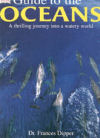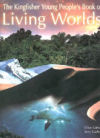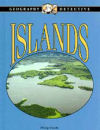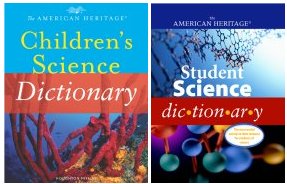Sea Giants and Island Pygmies Additional Information
Share this:
- Share via email (Opens in new window) Email
- Click to share on Facebook (Opens in new window) Facebook
- Click to share on X (Opens in new window) X
- Click to share on Pinterest (Opens in new window) Pinterest
- Click to share on Reddit (Opens in new window) Reddit
- Share to Google Classroom (Opens in new window) Google Classroom
- Click to print (Opens in new window) Print
For more about Craig McClain’s research on body size, go to www.mbari.org/news/news_releases/2006/snailsize.html (Monterey Bay Aquarium Research Institute).
Additional information about animal body size on islands can be found at www.pbs.org/wgbh/nova/eden/giants.html(PBS).
Sohn, Emily. 2006. Assembling the tree of life. Science News for Kids (May 31). Available at http://www.sciencenewsforkids.org/2006/05/assembling-the-tree-of-life-3/.
______. 2006. Coral gardens. Science News for Kids (March 1). Available at http://www.sciencenewsforkids.org/2006/02/coral-gardens-3/.
______. 2006. Big woman of the distant past. Science News for Kids (March 1). Available at http://www.sciencenewsforkids.org/2006/02/big-woman-of-the-distant-past-3/.
______. 2005. Fishing for giant squid. Science News for Kids (Nov. 2). Available at http://www.sciencenewsforkids.org/2005/10/fishing-for-giant-squid-2/.
______. 2004. Little people cause big surprise. Science News for Kids (Nov. 3).
Available at http://www.sciencenewsforkids.org/2004/10/little-people-cause-big-surprise-2/.
SciFiZone
How Small I Am . . .
http://www.sciencenewsforkids.org/articles/20060301/SciFiZone.asp
Books recommended by SearchIt!Science:
 |
DK Guide to the Oceans— Frances Dipper
Published by DK Publishing, 2002.
Mudskippers can walk on land and even climb trees. When they’re on land, they keep their gills full of a mixture of water and air so that they can still breathe. You’ll find thousands of facts such as this one in this book, as well as full-color photographs, diagrams, and maps. Learn about coral reefs, underwater volcanoes, beaches, frozen seas, and many other watery environments. Discover the assortment of animals and plants that call the ocean home. Find out how people have both harmed the environment and protected it. Learn how you can help keep the oceans safe for all creatures. Complete with additional sections on ocean mythology, records, and Web sites, this book provides an introduction to the mysterious world underwater. |
 |
The Kingfisher Young People’s Book of Living Worlds —Clive Gifford, Jerry Cadle
Published by Kingfisher Books/Larousse Kingfisher Chambers, 2002.
Prairie dogs, buffalo, burrowing owls, and rattlesnakes are just a few of the species of animals that live in the temperate grasslands—one of several ecosystems explored in this book. Complete with full-color photographs, diagrams, and maps, this book explores the weather, animals, plants, and people located in such diverse ecosystems as deserts, oceans, the tundra, and the northern forests. Find out what lives in the bottom of the sea, where there is no light. Discover how the cactus survives in the desert. Learn how humans affect the environment and what they can do to prevent its destruction. Find out still more about ecosystems by exploring a list of Web sites provided at the end of the book. |
 |
Islands— Philip Steele
Published by Carolrhoda Books/Lerner Publishing, 1995.
Did you know that Australia is the biggest island on Earth? Or that Indonesia has almost 14,000 islands? Learn how islands are formed and how they grow. Discover how islands are affected by volcanoes, water, and ice. The book covers island wildlife, plants, and the impact of global warming. Full-color photos, drawings, and maps illustrate the book’s points, and a glossary and index are provided. Each section has a “Geography Detective” box that provides interesting questions for the reader to think about. |
Power Words
genus One of the major groups in the classification of living things, made up of a group of species that are similar to each other. A genus is below a family and above a species. Plural form: genera.
rodent A usually small mammal with front teeth that are used for gnawing. The front teeth of rodents grow throughout the animal’s life, and gnawing keeps them from getting too long. Rats, mice, beavers, shrews, and hamsters are all rodents.
species One of the major groups in the classification of living things. A species is below a genus. Only organisms that belong to the same species are able to breed with each other.
Copyright © 2002, 2003 Houghton-Mifflin Company. All rights reserved. Used with permission.
